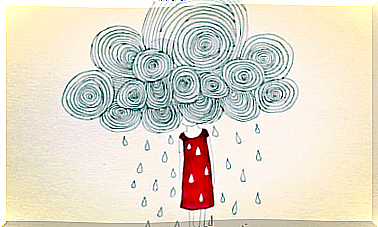7 Keys To Teaching Children To Share

It is normal for young children to show fear of sharing. It is also normal for them to feel that everything they want belongs to them, even if it is theirs. Even young children can sometimes show violent attitudes to stand up for “their own thing.” Despite this, it is necessary to teach children to share, showing them that by doing so they can earn more.
After all, sharing is not a natural skill, but a learned skill. But it is not easy. For young children, understanding what it means to give and receive is difficult, especially since they lack a clear understanding of time and language. For example, telling a child that he will get his toy back in a few minutes means little to a two-year-old.
Young children are in an egocentric phase of development, beginning to recognize themselves as individuals with their own things. They are beginning to explore what it means to own something and have not grasped the idea that some things belong to other people.
The good news is that, although it is not easy to achieve this, children are capable of learning to share. But this requires patience and good training on the part of parents and educators.
How to teach children to share?
Children generally understand the concept of sharing around the age of three. But it will be a while longer before the child is ready to do so. Although the child begins to develop empathy and knows that he must take turns, he is not mature enough to resist all his impulses. Most three- and four-year-olds put their most immediate interests first.
A young child may not understand enough to realize that even if he doesn’t have a toy now, his turn will come soon. Despite the outbursts that may appear, their sharing skills are maturing below the surface.
Here are some keys to teaching children to share that will help them mature in those skills.
Set a good example
If you want your young child to learn to share, it is important that they have good examples, models to look at . It could be sharing something to eat or letting them color and decorate something you are doing, for example, a reminder note or something you prepare of your own to share. It is also very interesting that I see you share with other people, ask for things please and give thanks.
Don’t forget that her things are her world
Children’s things are their world. If you force them, you will only negatively reinforce their obsession with keeping their things safe. The child must learn that sharing does not mean losing their things or giving them up, and that sharing with other children makes the game much more enjoyable.
Monitors how he uses what others share with him
When other children share something, it is a great time to let the child see what is happening. The other boy shares with him and then takes his own back and takes it away. If the toy is common, they can play several and then leave it where it was. So the child can see that nothing is wrong and that sharing is fun.
Try to understand why your child does not want to share
Your child may not want to share something because it has special meaning to him or because he fears that another child will spoil what he has done or achieved. They may even have reasons to think it, even if they do not know how to express it, such as that the other child has already done it on another occasion.
Use positive reinforcement
When your child shows a positive attitude and shares, reinforce him positively by acknowledging his action and congratulating him or rewarding him with something little that he likes.
Be patient
Some children find it difficult to understand that sharing is fun, but time is a great equalizer: everything will come. As your child develops social skills and makes real friends, he is more likely to embrace the idea that sharing is fun.

Sharing is more than exchanging objects
In addition to exchanging and sharing objects, you can also share time with a story or the attention of an adult. Adding the word share to the vocabulary whenever possible in these circumstances is very useful for the child to integrate it into his daily way of acting.
Sharing is more than exchanging things
In addition to exchanging and sharing things, you can also share time with a story or an activity. Adding the word share to the vocabulary whenever possible in these circumstances is very useful for the child to integrate it into his daily way of acting.
Teaching children to share is important
Learning to share can be challenging for young children. But it is a challenge that must be faced and overcome. It is an important skill they need to play and benefit from interaction with other children.
But not all children learn this skill. Surely you know co-workers, friends or relatives who, even as adults, have not acquired skills to share. And these adults are difficult to deal with. Sometimes you don’t even like being around them. Acquiring this skill as an adult is almost impossible, so it is even more important that the skill is acquired during childhood. So don’t underestimate the importance of teaching kids to share, especially your kids.









